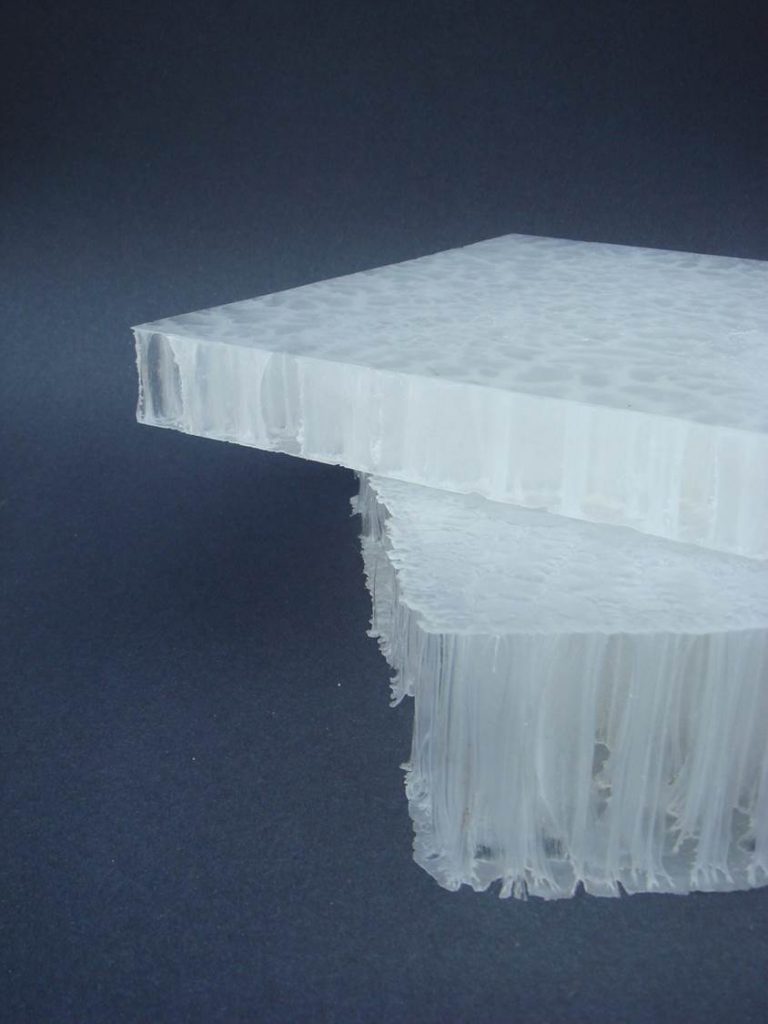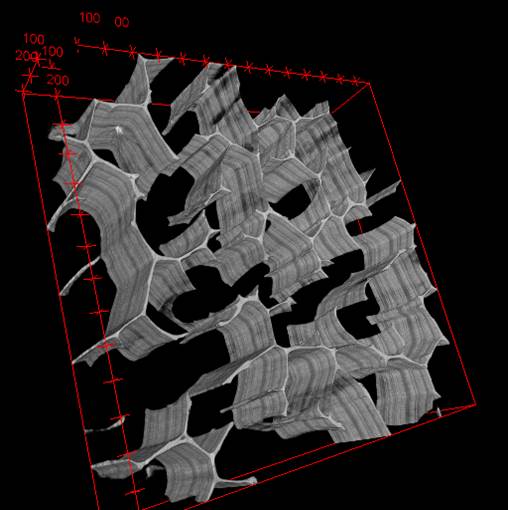Associate Professor Glenn Hibbard and colleagues develop low-cost, high-performance alternative to the traditional honeycomb structure using recycled plastics
(Left) Professor Hibbard’s Flycore panel made of recycled plastics. The prototypes have already been tested to match the performance of commercial polypropylene (PP) honeycomb structures and exceed that of commercial PP foams.
(Right) An x-ray tomography image of the internal Flycore structure. The bird wing bone density-inspired webbing structure plays a critical role in providing mechanical strength while minimizing weight and density.
March 1, 2014
Less is more – a materials concept revered in the automotive and aerospace sector. Lightweight and ultra-strong materials combined with unique structural architectures have set us on a path towards lower energy consumption and emissions reduction.
The honeycomb structure has been used in aerospace applications since the mid-20th century. The unique architecture allows for minimal materials requirements while maximizing strength. However, conventional manufacturing requires multi-step processes, along with expensive tools to construct its intricate design.
(Flycore) has already been tested to match the performance of commercial polypropylene (PP) honeycombs and exceeds that of commercial PP foams.
Associate Professor Glenn Hibbard, Canada Research Chair in Cellular Hybrid Materials, together with colleague Brent Cordner, a sessional instructor of industrial design in the U of T John H. Daniels Faculty of Architecture, Landscape & Design, have developed a low-cost, high-performance alternative to the traditional honeycomb structure. Using recycled plastics and mimicking the internal bone density and structure of bird wings, Hibbard and Cordner have come up with a single-step process to fabricate a “sandwich-like panel” with fully integrated core and face sheets. In other words, they are able to make the top and bottom “bread” layers of the sandwich and the internal webbing structure via one single step.

Photo: Glenn Hibbard, Associate Professor & Canada Research Chair, Cellular Hybrid Materials
Named “Flycore,” this prototype technology has already been tested to match the performance of commercial polypropylene (PP) honeycombs and exceeds that of commercial PP foams. The fully integrated core has also demonstrated “self-assembly” properties, meaning it becomes even stronger under certain compression profiles.
Cross-section of Professor Hibbard’s Flycore sandwich panel made of recycled plastics via a simple and cost-effective one-step process
Hibbard and Cordner presented their technology at the 1st Annual ASM Ontario Startup Night on January 15, 2014, and won first prize among seven other presentations. The event was coordinated by MSE alumna, Diana Facchini (MSE 0T2, MASc 0T5).
“This technology embodies one of the great potentials of materials science and engineering – the ability to drastically impact global sustainability and energy efforts.”
With intellectual property contracts in place, Hibbard and Cordner’s start-up company, Fly Technologies, is moving forward with further developing this technology. PhD candidate Megan Hostetter, along with a number of undergraduate thesis students in MSE, are developing various techniques as part of their academic research projects, from computer modelling to building a lab scale pilot plant, bringing this product one step closer to commercialization.
“This technology embodies one of the great potentials of materials science and engineering – the ability to drastically impact global sustainability and energy efforts,” said Uwe Erb, Professor & Acting Chair. “I am also delighted that the development of this technology benefits our students’ experience by allowing them to work on something so practical. Your recognition is truly deserving, Glenn.”


